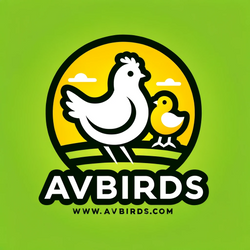If you’re excited to raise poultry, understanding turkey egg development stages is a great place to start. You’ll discover how these eggs transform from a tiny embryo into an active, fluffy poult—all in about 28 days. Let’s walk through each crucial step so you can set yourself (and your future turkeys) up for success.
Understand egg development
Before you jump into incubation, it’s helpful to know what’s happening inside each shell. Turkey hens lay one egg every 24 to 32 hours, collecting around nine to 13 eggs in a clutch. Surprisingly, almost 60% of turkey eggs are in a pre-development stage (stage ten) when they arrive at the hatchery. Stage thirteen offers the best embryo survivability during storage, and some breeders even use gentle heating methods to push eggs to that stage before formal incubation.
Turkey embryos go through endothermic (heat taken in) and exothermic (heat generated) phases. In the endothermic phase, you’ll need to supply the right warmth so the embryo doesn’t chill. By the time each egg hits the exothermic stage, it starts producing its own heat, so slightly lower incubator temperatures can be beneficial.
Prepare eggs before incubation
You’ll want to store your eggs in a stable environment if they’re not going into the incubator right away. Ideally, keep them at about 55°F with moderate humidity. If you plan on storing them for more than seven days, consider turning them gently once a day. This helps prevent the yolk from sticking to the shell lining.
When you’re ready, place your turkey eggs into a properly prepared incubator. Remember, every stage of turkey egg development can impact the final hatch quality, so keeping conditions just right matters a lot.
Fine-tune your incubator
Incubator temperature and humidity can make or break your hatch rates. Here are the basics:
- Temperature: 99.5°F if you have a circulated-air incubator. For still-air incubators, go slightly higher (about 2-3°F).
- Humidity: Aim for 55-60% until the final week.
- Turning: Rotate eggs 180 degrees about 3-5 times a day during days 1-24, which stops embryos from settling on one side.
Your turkey eggshell temperature usually runs a bit higher than the air around it, so stick with the recommended settings to keep development on track.
Check fertility with candling
Candling means shining a bright light into the egg to see what’s happening inside. Around day 7, fertile eggs usually reveal a spider-like network of veins. Occasionally, you’ll spot a blood ring, indicating a non-viable embryo. Remove those eggs to avoid any contamination.
On day 24, candling again helps you see how close the embryo is to filling the eggshell. A healthy egg will look dark inside with a larger air sac near the top. This quick peek reassures you that all is going according to plan.
Manage the final days
By day 24, you’re heading into “lockdown.” This means:
- Stop turning your eggs.
- Increase humidity to about 64%.
- Avoid opening the incubator unless absolutely necessary.
You’ll often see the first “pip” (tiny crack in the eggshell) around day 28. It’s tempting to help a struggling poult hatch, but experts recommend letting them do it on their own. Intervening too soon can cause injury or even death.
To keep these last days stress-free, mind the air circulation in your hatcher or incubator. Trials show that reducing fan speeds can decrease exhaustion in turkey poults and improve overall hatch success. Another big factor is maintaining steady CO2 levels to trigger that final hatching push without overexerting the chicks.
Wrap up and next steps
By the time each poult makes its appearance, you’ll see for yourself how important consistent temperatures and humidity levels are. Let those little ones dry completely before you move them into a brooder. Once they’ve settled, you can celebrate a job well done. After all, raising turkeys from eggs is an incredible journey, and there’s nothing quite like watching those poults wobble around on day one.
If you’re eager to take the next step, consider tracking each phase of incubation with a simple log or journal. You’ll catch small issues early, and you’ll gain a deeper insight into turkey egg development. Before you know it, you’ll be sharing your own success stories, helping other poultry enthusiasts hatch healthy birds in time for the holiday season or any time of year!

